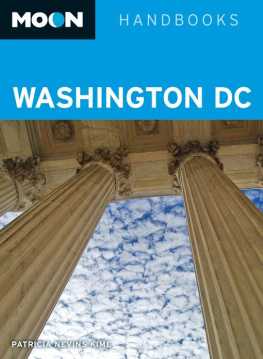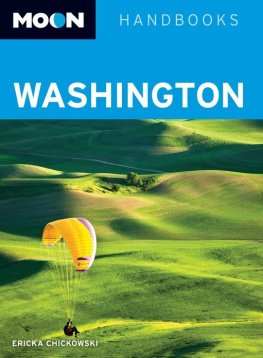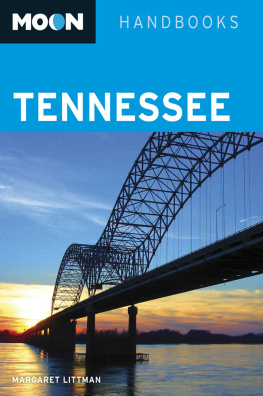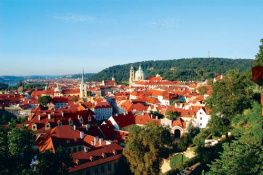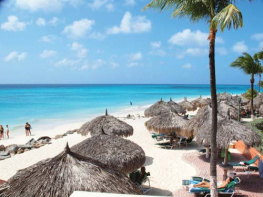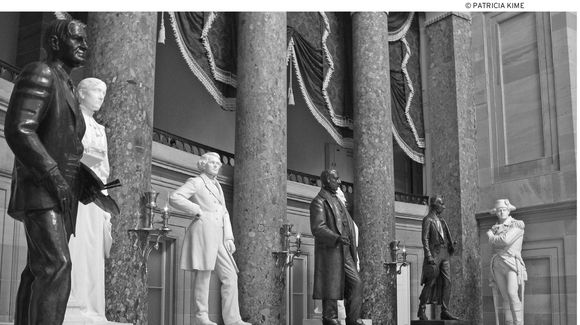The waters of the Potomac River tumble over falls great and small just northwest of Washington before fanning out under the citys broad bridges, forming the U.S. capitals western boundary. To the northeast, the Anacostia Rivermore a wide creek than a great tributaryenters from the Maryland suburbs, cleaving the city in two before converging with the Potomac, which pours into mighty Chesapeake Bay 100 miles downstream. Washington sits at the confluence of these two rivers, a city straddling the mid-Atlantic geographic fall line that separates the region called the Piedmont Plateau, a raised area of rolling hills and valleys that slopes steadily to the Blue Ridge Mountains to the west and the Coastal Plain, a wide, flat region formed from eons of fluvial deposits that stretches to the Atlantic Ocean. The site for the city was selected largely in part for its location about midway among the 13 original colonies. Today, this city of 650,000 and its sprawling suburbs of nearly 5 million rests in the middle of the Eastern Seaboard, in an area that is largely agrarian outside the suburbs to the west, south, and east,, with small cities such as Annapolis and Frederick, Maryland, and Fredericksburg and Leesburg, Virginia, each within an hours drive. To the north is the industrial northeast, with Baltimore, Philadelphia, and New York City 1, 3, and 4 hours, respectively, by car. To the south, 90 miles away, is the former capital of the Confederacy, Richmond, home to Virginias statehouse.
Washington is bordered on three sideswest, north, and eastby the state of Maryland and to the south by Virginia. The Potomac River, where it runs along the city, lies entirely within the District of Columbia, which means the DC border runs directly to the Virginia shoreline, and some city landmarks, reachable only from Virginia, including Roosevelt Island and the land that contains Lady Byrd Johnson Memorial Grove, are actually considered to be in DC and not in Virginia, as they appear. Washington covers an area of 68.3 square miles, 61 of which are land, with nearly seven square miles of water. The geography of the northern and northwestern portions, visible in and around Rock Creek Park, is rough and rugged, a reflection of its placement in the Piedmont Plateau, an area created by the erosion and upheaval of ancient mountains. Rocks and boulders in this area are largely metamorphic and igneous, with the predominant minerals being boulder gneiss, granite gneiss, mica schist, and quartzite. The citys eastern and southern portions belong in the Coastal Plain, referred to as the Tidewater region in Virginia, a flat area of light soils and sediments that encompasses marshes and broad waterways. The highest point in Washington is 410 feet above sea level in the Tenleytown neighborhood at Fort Reno, a neighborhood park and former Civil War fort. The lowest geographic point is sea level, at the shorelines of the Anacostia and Potomac Rivers from just south of Little Falls, near Chain Bridge to the citys southernmost point. The city is divided into quadrants that meet at the U.S. Capitol, although the citys actual geographic center is near the intersection of 4th Street, L Street, and New York Avenue NW. Nearly 20 percent of the Districts land is parkland, second only to New York City in terms of preserved acres as a percent of land area in the United States.
Washington has four distinct seasons, but with a relatively mild climate that offers a taste of the bestand worstof each. Spring and autumns are the citys most glorious, often with crystal-clear deep-blue skies and warming, moderate, or slightly cool temperatures (although early spring can sometimes be unseasonably cool and wet, and winter occasionally comes early in the fall). Summers are decidedly Southern in nature; the region is classified as subtropical humid, and days are hot and exceedingly sticky, with average high temperatures of 88F in July and 85F in August. Humidity is often upward of 55 percent late in the day. As a result, late-afternoon thunderstorms are commonplace from late June through Labor Day, although their occurrence isnt quite as dependable as they are in tropical regions like Florida. Winters are mild, although an errant arctic air mass can force the mercury down to the single digits. Snowfall is hit or missin some years the area receives none; at other times, major snowstorms have paralyzed the city for up to a week. The average is roughly 14 inches of snow per year. Because of this ambiguity, the city departments that handle snow removal and oversight do not have the large budgets or capabilities for performing their tasks that Chicago, Boston, and any place north of New York have, a situation that often leads to mass closings of the federal government and schools and opens Washington to great ridicule. Still, the surprise closings lead to a few of those fun, unexpected joys of childhoodthe snow day.
Average rainfall in DC is nearly 40 inches per year, with much of it coming in rain that lasts for days but also comes in thunderstorms. If you find yourself on the National Mall or in an open space when a thunderstorm is approaching, head indoors and remain there until the storm passes. They usually move on quickly.
The Washington of today is very different than it was 40 years ago. In the 1960s and early 1970s, the pollution in the Potomac River was so objectionable that President Lyndon Johnson cited its filth as a reason to urge passage of the Water Quality Act of 1965. Georgetown housed great factories, including a flour mill and a rendering plant that emitted a smell so putrid the flour mill posted a sign along the Whitehurst Freeway: The Objectionable Odors You May Notice in This Area Do Not Originate in This Plant. Even today, an aging power plant on Benning Road in the citys eastern half is blamed for releasing unhealthy amounts of particulates into the air. Still, Washington never quite developed as an industrial city, so it has far fewer problems with health concerns caused by tainted water, air, and land than major industrial cities. But it does have at least one unique issue, a problem that came to light in northwest DC in the neighborhood of multimillion-dollar homes around American University, that might indicate further hidden health concerns: In 1992 Rick Feeney, who lived in Spring Hill near American University, was cutting his lawn when he heard his dog whining nearby. Responding to the dog in a nearby construction site, Feeney was overcome with watering eyes, stinging skin, and a bitter taste in his mouth. His dog had stumbled on a canister containing chemical weapons, left by soldiers in the 1920s when the area contained the U.S. Armys chemical warfare research center. When the Army shut down its program, service members buried many of the leftovers and walked away. Since 1993, the Army has worked to test and clean up the area that spans the Spring Valley and American University neighborhoods.
With restrictions and cleanup of the areas sewer plants and water treatment facilities as well as renovations and restrictions on existing factories and businesses, Washington on the whole is much cleaner than it was two decades ago. The Potomac River is now used for recreational boating and fishing, and families gather at the banks of the Anacostia River and the Potomac for picnics. Even swimmers venture into the waterunheard of just 10 years ago, but still not recommended because the seemingly placid river has treacherous hidden currents.

